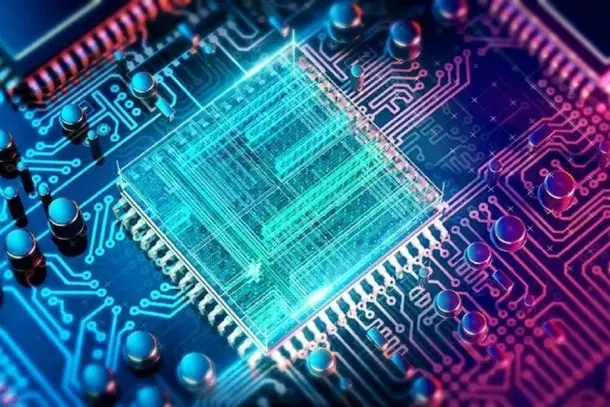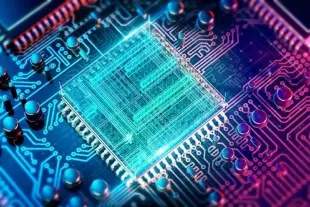News Brief
Chinese Scientists Develop Superfast Analogue Chip, Claim Future Versions Could Be 1,000 Times Faster Than Top GPUs
Swarajya Staff
Oct 24, 2025, 03:37 PM | Updated 03:37 PM IST
Save & read from anywhere!
Bookmark stories for easy access on any device or the Swarajya app.


A team of Chinese researchers has developed an advanced analogue chip capable of solving complex mathematical problems for AI and scientific applications—promising far greater speed and power efficiency than traditional digital processors, according to a study published in Nature Electronics.
Designed by Chinese scientists at Peking University, the analogue chip utilises resistive memory materials that may enable faster and more efficient data handling.
The researchers estimate it could one day outperform leading processors like Nvidia’s H100 GPU by a factor of 1,000.
"Precision has long been the central bottleneck of analogue computing," the team noted in their Nature Electronics paper published on 13 October, South China Morning Post reported.
Assistant Professor Sun Zhong, a co-author of the study, said in a university release that achieving both precision and scalability in analogue systems has been a “century-old problem” for scientists worldwide.
"Benchmarking shows that our analogue computing approach could offer a 1,000 times higher throughput and 100 times better energy efficiency than state-of-the-art digital processors for the same precision,” the team said in the paper.
Unlike binary digital computing that depends on 0s and 1s to store and process data, analogue computing handles data as continuously variable values, enabling smoother and faster real-world simulations.
Digital computing works like a basic light switch— with only on or off settings—while analogue computing functions more like a dimmer switch with a dial, adjusting across a full range of settings.
According to Peking University, the new analogue chip achieves accuracy levels similar to digital systems, opening possibilities for next-generation AI and 6G communication technologies.
The chip was also used for detecting wireless communication signals, performing on par with digital processors in real-world testing.
Digital computing remains the mainstream choice for general applications because of its programmable flexibility and massive data storage capacity, relying on structured, step-by-step calculations.
Complex mathematical computations underpin fields like scientific modeling, signal processing, and neural network training—areas where analogue computing could prove transformative.
Despite its dominance, digital computing struggles with large-scale, continuous simulations such as weather modeling or matrix-heavy AI operations, where analogue systems could offer an advantage.
"With the rise of applications using vast amounts of data, this creates a challenge for digital computers, particularly as traditional device scaling becomes increasingly challenging," the team said.
The digital systems’ separation of memory and processing units causes high energy use and slower computation, intensifying concerns as computing nears its physical boundaries.
By using physical parameters like voltage, current or water pressure to directly solve problems, analogue computing can simulate dynamic systems or perform AI computations with remarkable speed and energy efficiency.
Historical roots of analogue computing trace back to the Antikythera mechanism, an ancient Greek device designed to predict celestial events.
In 1936, Soviet engineer Vladimir Lukyanov created the “water integrator” — an analogue computer using flowing water to calculate mathematical equations.
However, challenges like limited precision and scalability have long kept analogue systems in the shadows, often dismissed as “legacy technology,” according to the university.
The researchers explained that resistive memory arrays—storing information through changes in electrical resistance— could enable faster solving of complex matrix equations.
According to the team, their chip already outperforms high-end GPUs in solving medium-scale matrix equations, and ongoing circuit enhancements could further accelerate its capabilities.
Please click here to add Swarajya as your preferred and trusted news source on Google





